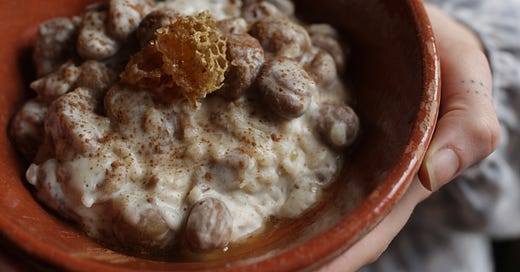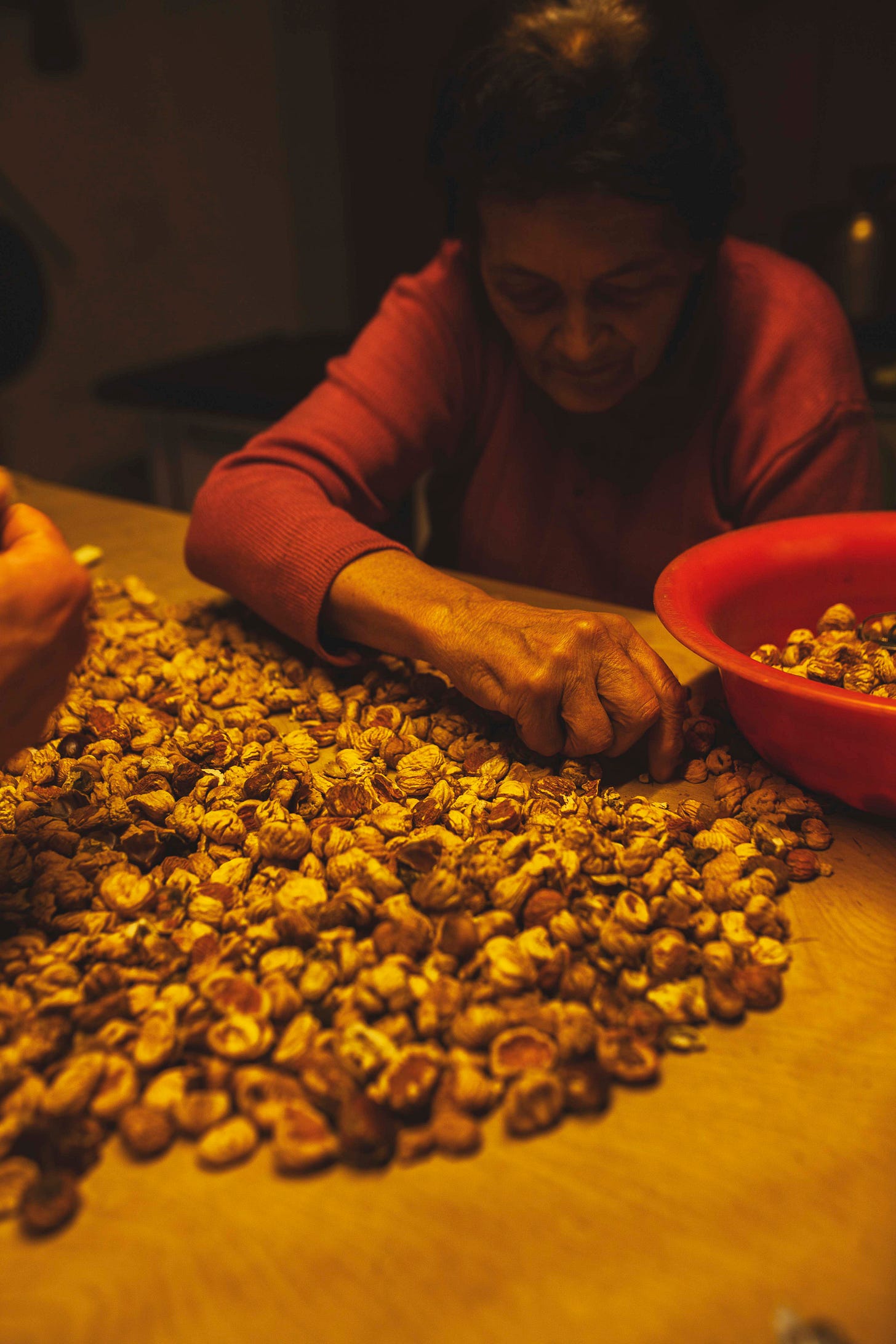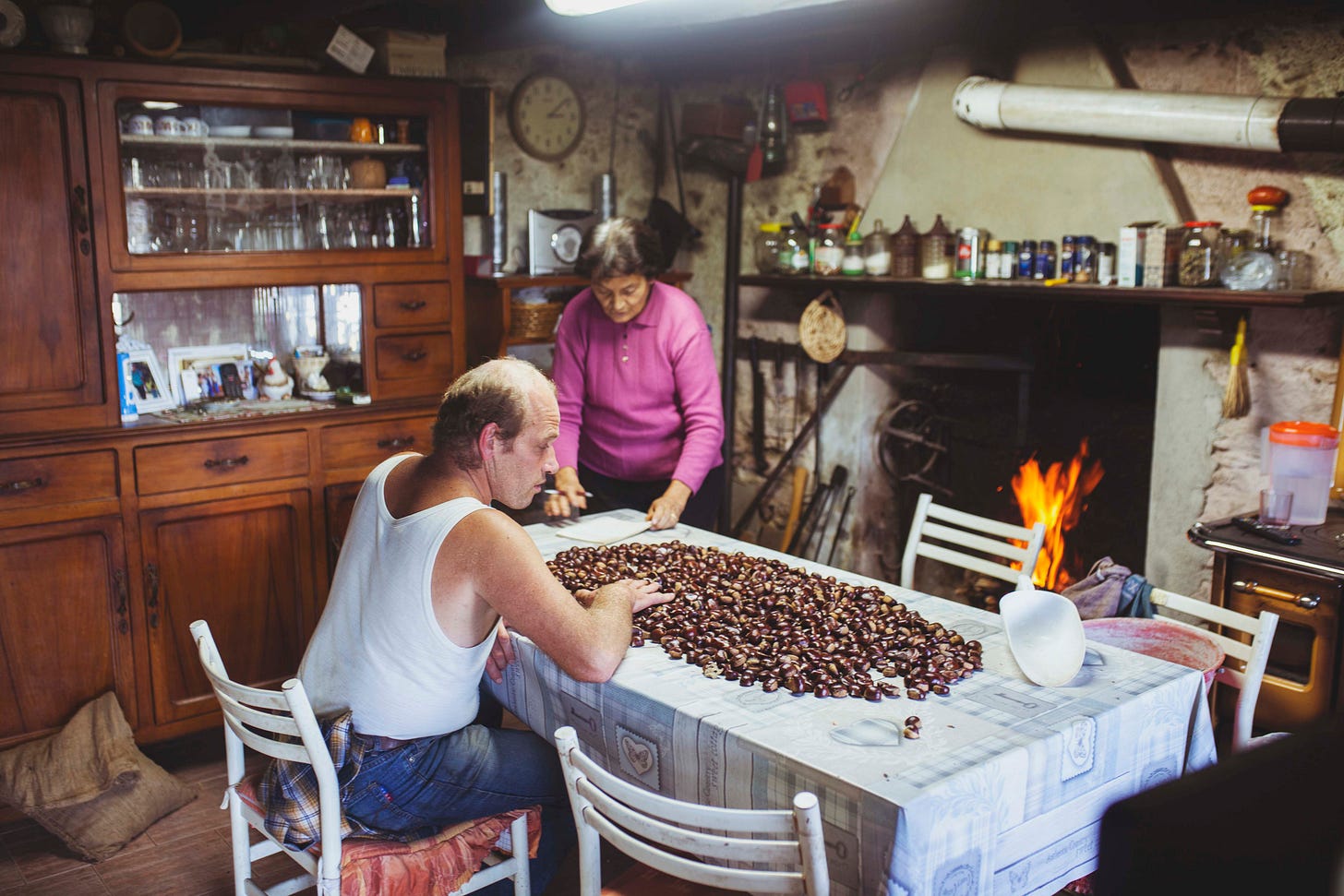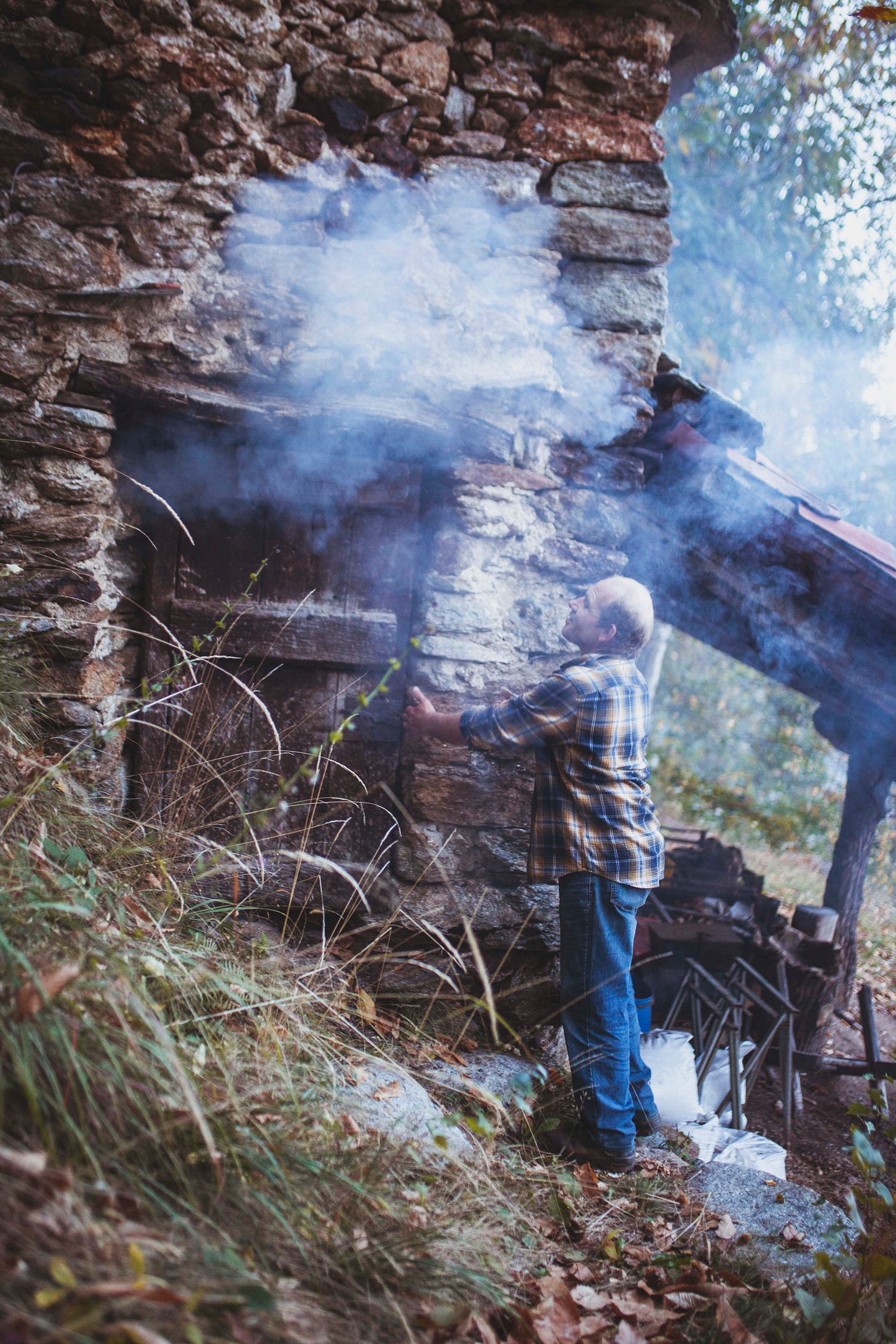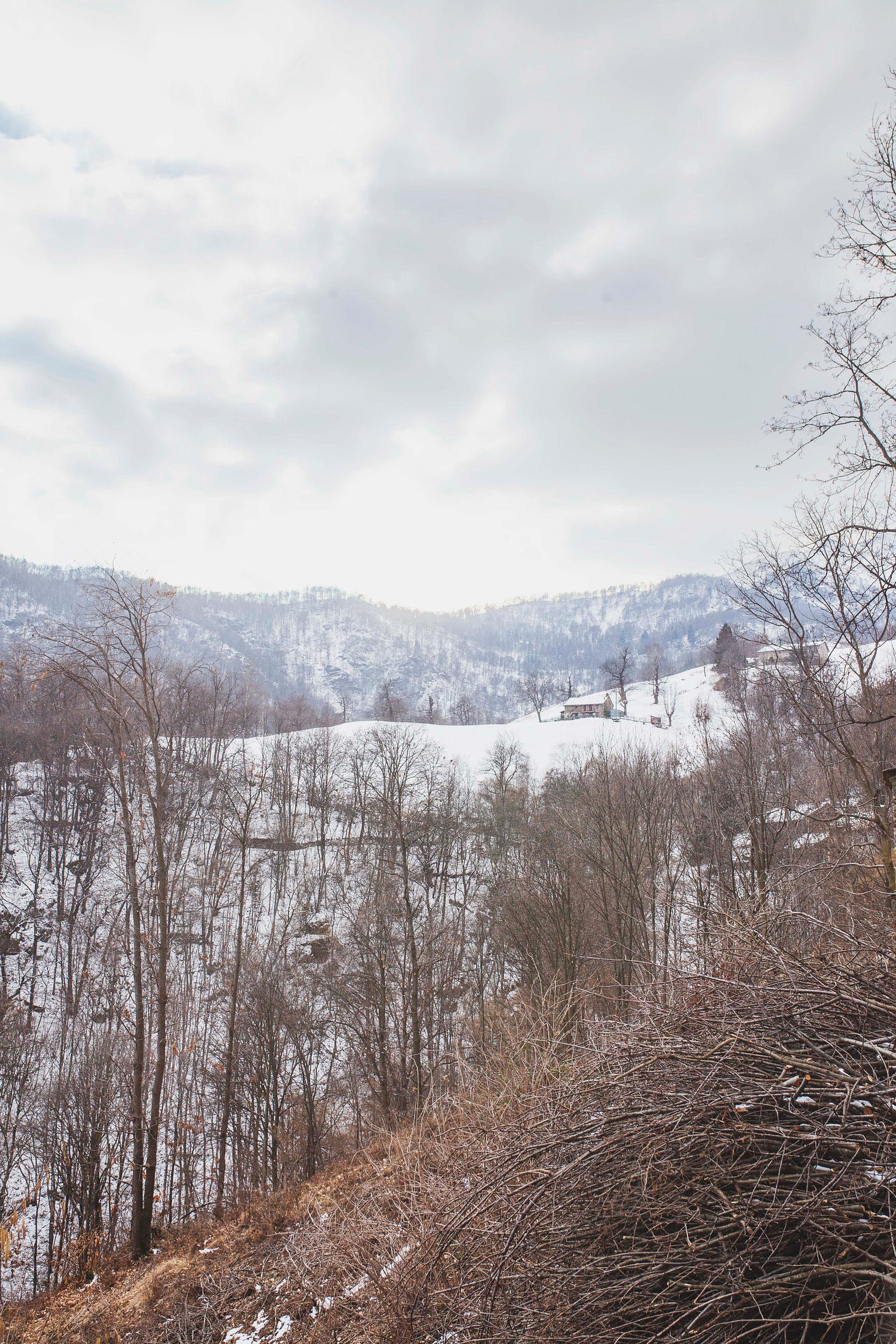VIANDA // Valle Elvo // Piemonte // ITALY
A cucina povera powerhouse, this comforting dish of smoked chestnuts, rice and milk has sustained the piemontese mountain communities through difficult winters for centuries. A favourite here at UTTL.
I am delighted to add this to the archive as there are few recipes that encapsulate the transformation of the landscape into food more succinctly than this. It demonstrates the extraordinary confluence of preserved and wild ingredients that become an almost alchemically delicious dish. For more reading on the topic, click here for a piece I wrote for VITTLES.
Paid subscribers access the full recipe along with more of my photographs preserving chestnuts with Daniele and Tina, of which I am extremely proud. Paid subscribers will also be able to find out how to get hold of Tina’s chestnuts.
VIANDA or Riso, Castagne e Latte
Over the past few years I have been visiting the tiny mountain village of Bagneri, nestled in the quiet chestnut forests above my home valley of the Elvo. It isn’t really accessible by car, with the main village consisting of one small street, a community mess and beautiful church, where the dozen or so buildings’ roofs are tiled with huge slabs of the silica-rich, twinkling mountain stone, their chimneys poking out above the auburn sweet-chestnut woodland.
In October, I remember there being the ubiquitous smell of chestnuts roasting, their shells burning a woody sweetness into the dense, cool air all along the valley of the river Elvo, which feeds the rice paddies of the flatlands at the foot of the mountains. It is something that happens in abundance through autumn, this activity that revolves around fire and red wine, an ephemeral moment which I love most for its primal connection to the land. It is for everyone- anybody who wants to can gather handfuls of these abundant, starchy nuts, stuffing them into haversacks and pockets, or scooping them into aprons tied round your waste as was once the way.
Then thrown onto a fire and roasted, with friends or alone, it doesn’t matter. And when they’re done, peel them piping hot, popping them into your mouth with no salt or seasoning. To me, there is nothing more perfect and honest than this. I love the sweet chestnut tree, and everything I have learned it can give. It is no wonder that to the folk of the valley it is known as “L’albero del pane” meaning “the bread tree”, or more beautifully, sometimes just “l’arbo” or to you and I, “the tree”.
I met Tina and Daniele some three years ago on one of three research trips into the mountain to document three phases of chestnut preservation, to find the last chestnut smoker still in use in the region. It is the graa of Bagneri. A three by three metre building with two floors, on the bottom a room for a fire pit, and above, a space with a chestnut-wooden beam floor with gaps between the planks wide enough to slide a pencil. The roof is stone, with a tiny chimney and window for smoke to escape.
Tina and Daniele are true alpigiani, a vestige of mountain people who hold numerous generations of knowledge that interest me greatly- the way that people of a place transform their given landscape into food that is rooted in a fundamental need to survive in their given geographical context. Sustainability with knobs on.
Up in Bagneri, the first phase is to gather the chestnuts using rakes and although nowadays plastic, there are some still made rather unsurprisingly with chestnut wood. We harvest them from plateaus the size of half a tennis court which were man-made long ago to jut out from the mountain and stop the rolling chestnuts as they tumble down.
The chestnuts are placed into buckets or baskets and taken back up to the mess hall by the church and poured into jute sacks. I join Daniele in the back of his mini tractor as we take the chestnuts to Tina’s house, a small farmhouse building on a clearing, facing us on the other side of the tight valley. Here, the chestnuts are sorted individually by looking for tiny insect holes in their shell round the table in her cosy home with fire aglow, that pops and cracks when she throws chestnut debris and weevil larvae over her shoulder into the flames.
Once graded, we load up the tractor and head to the graa where Daniele unloads the bags into the top section, pouring them out over the previous week’s addition with a pleasant, dull rumbling sound, turning them over with a paddle made of chestnut wood. The graa is now filled with almost half a tonne of plump, shiny chestnuts that have been collected over a month. And now it is time.
He lights a fire in the bottom of the graa, using large pieces of chestnut wood, some twigs and from a large blue drum, a handful of some kind of coarse, velvety sawdust. Closing the door, he looks up at the blue smoke wending its way through the leaves of the trees and the hanging chestnuts above us.
The fire is lit every night and every morning, burning constantly for forty days and the chestnuts are turned now and again with the paddle.
They are being preserved through desiccation, heat and smoke rising through the floorboards to penetrate the thousands of chestnuts above. Moisture leaves the kernel inside its shell from the heat, and the movement of air carries water molecules up and away, smokey, tarry compounds deposit on their shells all helping to prevent the entire batch from perishing with mould. This is a vast quantity of food which, if processed correctly, will last through the rest of autumn and winter until the arrival of spring.
Forty days later it is time for the battitura- the beating and threshing of the smoked chestnuts. A communal get-together, the chestnuts are loaded from the graa into hemp sacks and beaten over a leather-covered tree stump, for forty whacks. This ruptures their dry shells, and the contents of the sacks is poured out over a large metal grate placed over tarpaulin or into Tina’s beautiful old winnowing basket. Woven into the shape of a giant dustpan, she deftly flicks the crumbled casings out and onto the tarp with the pale, shrivelled kernels tumbling to the back of the basket.
The day is done when all clean kernels are separated out and returned to the same old jute sacks they had already been to Tina’s in, and the piles of velvety, coarse casing chaff is gathered from the tarp and crammed into the blue drum for the graa’s chestnut fires of next year.
That’s right. Chestnut-smoked chestnuts in a smoker made of the mountain.
It is January, I return a few days later to sit again with Tina and Daniele, this time there is snow fluffed up on the stone roofs of Bagneri, flecked on the shuttered windows and that rare white silence that feels like a memory.
Opening the wooden door into the small fire-lit room is stepping into a deep sense of safety and belonging, another form of hearty, honest connection to mountain life that feels incredible and makes me smile. There is no phone reception and I am quick to forget about my iphone in my smock and instead, we sit there for hours, selecting each individual chestnut and picking away the tannic, papery “shirt” that is trapped in the wrinkles of the nut, keeping any discoloured or mouldy nuts for the pigs, with the fire crackling away, the mocha pot spluttering on the stove. It is dark out on the snowy mountainside and within, the timeless glow of fingers and faces lit by firelight, working away at the bread of the trees.
And it is here that Tina shares with me her favourite recipe from her alpigiana heritage, vianda. Made with raw milk from the herd that graze the mountain’s wild pasture, the chestnut-smoked chestnuts of the mountain, the spring water of the mountain, chestnut honey from when the trees were in bloom and a knob of raw mountain butter whose cultures are of the place. And a handful of rice from the fields below, fed by the torrent of the Elvo. Without doubt amongst the most comforting food I have eaten, Tina’s Vianda is one of my favourite dishes ever.
Here’s how to make it.
Keep reading with a 7-day free trial
Subscribe to Up There The Last to keep reading this post and get 7 days of free access to the full post archives.

